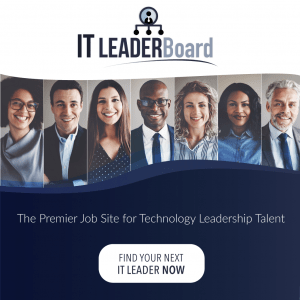Existential crises – such as the pandemic, climate threats, civil unrest, and economic disparities – have disrupted organizations. With the world shaken, organizations are likely still weathering the first shock or have moved on to preparing for the next.
These destabilizing events illuminate the inherent weaknesses that must be addressed if companies wish to navigate sweeping global changes.
Compounding these disruptions, are the emerging innovation trends that were already forecasted. These include embedded technologies, digital organizations and money, greater privacy and data protection laws, entertainment fragmentation, and more. Business models and consumer behavior are also evolving (e.g., seeking better mobile experiences).
The combination of internal and external forces create an environment where change is necessary. There is no longer a choice — all enterprise IT departments need to catch up to the 21st century and be prepared for future disruption through technology transformation. The good news is that most CEOs view digital transformation as an imperative to driving revenue, so with leadership buy-in it is time to evaluate a transformational strategy and framework.
Technology Business Management (TBM) Framework
The Technology Business Management (TBM) framework has proven to be critical in measuring what matters most, in addition to being incredibly helpful with prioritizing value and value conversations in organizations. As part of a broader transformation of IT and/or the business, TBM offers a framework that creates a sense of budget ownership and motivates business decisions that optimize spending, in addition to enhancing business agility. By enriching value, empowering decision-making, and driving economic forces to equilibrium, TBM offers the modern enterprise an opportunity to seize a greater competitive advantage and optimize value from IT investments.
In Todd Tucker’s Technology Business Management: The Four Value Conversations CIOs Must Have With Their Business, he details ways companies of all sizes and industries can leverage the TBM framework. Through this three-part series, I’ve summarized five of Tucker’s initiatives with a discussion around how they can be applied to organizational challenges.
Let’s begin with the first step in empowering teams to drive transformation efforts: creating a sense of budget ownership and motivate business decisions that optimize spending.
Budget Ownership and Spending Optimization
Creating an environment of shared purpose and budget ownership empowers strong business decisions. Transformation conversations should include the cost, quality, and value of IT, which can be done by mapping and tracking technology and identifying who is consuming it.
When technology organizations stumble, it is usually because of a misalignment between business attributes and the value proposition. This jeopardizes the organization’s ability to purposefully allocate key resources, plus leaders may assume that the value proposition should mirror the corporate strategy.
How to fix this misalignment?
IT’s value proposition must clearly articulate how IT enables the business to execute its strategy. According to Tucker, the value chain for a technology-enabled business begins with the capabilities that the business uses to create revenue or serve customers. Next, IT enables that value through business services and applications, which are built on technology and end-user services. In turn, those services are assembled from resources (i.e., IT towers).
Each business conversation should start from the perspective of business capabilities and consumption, helping IT and business leaders work together towards improved outcomes. The essential nature of a value proposition is that an organization must own and perform parts of the value chain. However, cost-effectively delivering technology is not enough. To be an integral part of a business an advantage must be provided when delivering a value proposition that external vendors cannot match. This can be accomplished by embracing business models that are designed to facilitate transformation higher in the value chain, such as the Expense Center, Service Provider, Value Partner, or Business Driver. Regardless of the business model, services power the capabilities of an organization’s needs.
By aligning business attributes and the value proposition, organizations can strike forth in a united effort. Furthermore, the TBM taxonomy and framework centralizes terminology and methodology so that disparate efforts aren’t happening concurrently.







